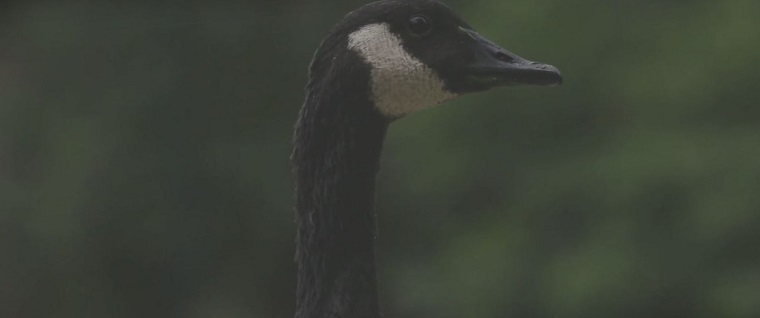-
info@aaanimalcontrol.com
Call us for help in your town
Humane Wildlife Education
Things About Canada Goose appearance, biology, life cycle, habitat, diet, and behavior
Need goose removal in your hometown? We service over 500 USA locations! Click here to hire us in your town and check prices - updated for year 2020.
The Canada goose is one of the most common and familiar faces in the bird world across North America, and particularly in areas such as Washington. Their V-shaped formations have become almost symbolic in this day and age, the loud and almost hooting honk sound heard for miles around. They seem to have become all too familiar over recent years, however, and are now considered as somewhat as a pest. And a rather aggressive one at times — a beast who doesn’t really seem to be overly afraid of humans.

That’s never a good thing!
Depending on where you are in America, there are generally considered to be two types of this Canada goose. There is the type that can migrate and the type that can’t migrate - migrating and non-migrating. You may have heard of non-migrating Canada geese being called a different name - resident Canada geese.
Those that are resident are unable to fly off for the winter months are that way because geese are taught a flight path by their parents. If they are not taught this flight path, they don’t know where to go and will just stay in the territory in which they currently stand.
What do Canada geese eat?
While having a good old wander across land, Canada geese will graze. They will eat both plant and animal based foods, including alfalfa, oats, barley, rye, corn, wheat, and millet. They will also munch out on tadpoles, snails, and a few different insects. When they reach water, their necks are what help them to find food. They simply peek down into the water, look around for something tasty to eat, and then make a literal nose-dive for it.
R
Where do Canada geese live?
As you can probably imagine, Canada geese, much like other geese, set up nesting spots that are close to a body of water. They can create nests in a wide variety of places, both up high and down low, and when they are given the opportunity, they will even steal the nests of other birds. These will often be abandoned, but will have once belonged to the likes of ospreys and herons, and sometimes eagle nests too. They’ll make nests on the shores of water, as well as in the tall trees. They work out what seems to be the best spot for that particular territory, making the most of what they have around them. It's a pretty smart approach, and being that adaptable has sure done this bird species the world of favors.
What is the life cycle of Canada geese?
A nesting spot can be revisited by the same pair of breeding Canada geese for many years in a row, and, unless something terrible happens (such as a death), a pair of breeding geese will also stay together for the duration of their life. The species will usually become reproductively active at around two and a half to three years of age, and they can live for up to thirty years in the best of conditions. Many wildlife species have shorter life spans in the wild, however, and this because of many factors, including but not limited to human intervention, disease, predatory attacks, removal of natural territories and bodies of water or trees, dwindling food and water sources, and much more besides.
The male and female stick together to try and encourage the eggs to incubate and hatch. There are usually five or six eggs laid each time, and it only takes about a month for the youngsters to start hatching out. They get off to a flying start too, the goslings (as they are known) able to do pretty much everything they need to do within a day or two of being born. Well, everything except flying. That doesn’t happen until a few weeks later — usually at about the two to three month old mark. They won’t leave the safety of their parents yet though. That doesn’t happen for another few months. The goslings will normally be a year old before they venture off into the big wide world.
Read my How to get rid of Canada Geese guide.
For more information, you may want to click on one of these guides that I wrote:
How much does bird removal cost? - get the lowdown on prices.
How to get rid of birds - my main bird removal info guide.
Example bird removal photographs - get do-it-yourself ideas.
Bird job blog - learn from great examples of bird jobs I've done.


















